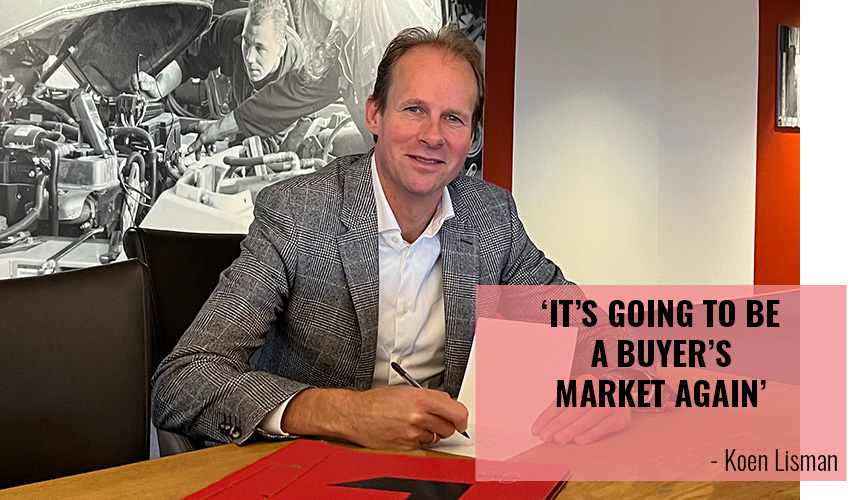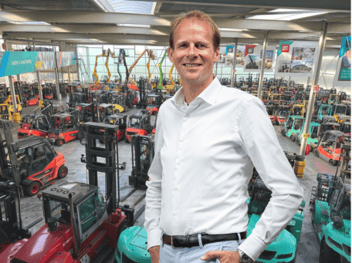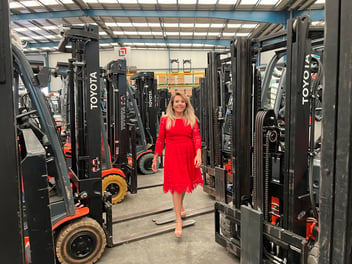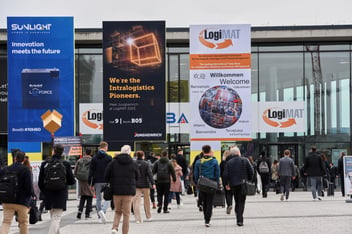TRENDS OF THE MACHINERY INDUSTRY IN 2023
The machinery industry is moving. After challenging years manufacturers, suppliers and traders of forklifts and material handling machines are looking ahead.
As an international specialist in the wholesale of used forklifts, Lisman Forklifts is at the heart of this global industry. What developments, for example in terms of purchase and sales prices, are we seeing? What are the trends of 2023 regarding new and used forklifts? And what’s the logistics sector approach to automation and robotisation?
Koen Lisman, CEO of Lisman Forklifts, shares his vision and expectations on the material handling machinery industry in 2023.
A summary of the most significant developments:
- The huge price increases of new machines over the past two years are levelling off
- Backlogs and delivery times of new machines are slowly catching up
- Value correction of new and used forklifts
- Accelerated electrification of material handling machinery
- Automation takes off in 2023
- Rise of Chinese manufacturers in the European market
‘It’s going to be a buyer’s market again’
“We are seeing a clear change: the market is becoming a buyer's market. The buyer can be critical again. In recent years, mainly driven by the COVID pandemic, sellers controlled the market of forklifts and material handling machines. This was not only the case in our sector, by the way, but a clear development in several industries. We are now seeing a turnaround: the buyer is slowly gaining control again.”
Mismatch between supply and demand
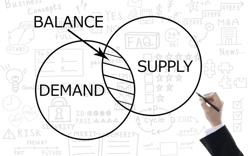 Besides personal distress and the major impact on society, COVID-19 also caused problems business-wise. “First and foremost, of course, we think of companies and business owners who could just – or weren’t able to – stay afloat. But, the effects of COVID were also evident in the supply chain.” Due to a shortage of resources and long delivery times of components, it was very difficult to manufacture new machines. Against market expectations, demand for new machines shrank considerably less than projected by the industry. “The demand actually increased. This created a huge mismatch between supply and demand of internal transport machinery.”
Besides personal distress and the major impact on society, COVID-19 also caused problems business-wise. “First and foremost, of course, we think of companies and business owners who could just – or weren’t able to – stay afloat. But, the effects of COVID were also evident in the supply chain.” Due to a shortage of resources and long delivery times of components, it was very difficult to manufacture new machines. Against market expectations, demand for new machines shrank considerably less than projected by the industry. “The demand actually increased. This created a huge mismatch between supply and demand of internal transport machinery.”
Extensive delays and skyrocketing prices
The consequences were felt by every trader, dealer and business owner. Major price increases, long waiting times, the new machinery market suffered hefty blows and faced critical challenges. “But,” Koen says, “the end is in sight. Until recently, used machines were the only alternative. Now we are seeing the first signs that supply chain issues are being resolved. Supplies are picking up speed and major manufacturers will be able to start delivering again. In the coming period backlogs will be cleared, delivery times are being reduced, but also the demand for new machinery is decreasing.”
‘Inflation correction’ on new machines
T he market will correct itself, Koen expects. “We have seen huge price increases for new machines. In some cases the price of machines has gone up by more than 25 percent. Even higher than the rise in inflation. Of course, the costs of raw materials, resources and transportation have increased significantly, but I am convinced that the price-surge applied by suppliers of finished products within our industry also is based on achieving margin growth for maximising profitability. It’s often said that prices can’t drop or go down. I disagree. Pre-COVID prices may not return, but the price of new machinery will experience a ‘negative inflation correction’. Especially once the macroeconomic sentiment tilts. At some point, the shore will stop the ship.”
he market will correct itself, Koen expects. “We have seen huge price increases for new machines. In some cases the price of machines has gone up by more than 25 percent. Even higher than the rise in inflation. Of course, the costs of raw materials, resources and transportation have increased significantly, but I am convinced that the price-surge applied by suppliers of finished products within our industry also is based on achieving margin growth for maximising profitability. It’s often said that prices can’t drop or go down. I disagree. Pre-COVID prices may not return, but the price of new machinery will experience a ‘negative inflation correction’. Especially once the macroeconomic sentiment tilts. At some point, the shore will stop the ship.”
Used forklifts will slightly drop in price
Whereas during COVID every machine was sold effortlessly, regardless of specifications, in 2023 the market is shifting. “There is a clear separation between obsolete trade and common machines. Used machines with a blemish, for example, a non-desirable version or machines with a lot of operation hours, will drop in value more firmly.” As used machines have been operational for a longer period of time, simply because of the shortage of new machines, the ‘second-hand market’ currently mainly consists of ‘run-down’ machines.
“The forklifts and other material handling machines we buy now have typically put in considerably more hours, whilst the demand for these machines is evolving. The demand doesn’t automatically match with the machines that are available or are coming up for sale in the market. Overall we expect a slight price drop for used machines, especially those machines with sub-optimal specifications. With the exception of hot-specs. Regardless of this trend, popular machines will remain expensive, as scarcity will not have an effect on these machines.”
‘We continue to buy all used machines’
 The price delta between a new machine and a used machine is returning to normal levels. “We will continue to buy all machines offered to us by our partners, but developments are going to affect the price. We expect a value correction for second- or third-hand machines. With the exception of 'young' used machines. These machines remain popular and are in high demand because these machines can be passed on to an end customer without too much effort or refurbishment. Every dealer today is struggling with a shortage of mechanics to make machines ready for sale.”
The price delta between a new machine and a used machine is returning to normal levels. “We will continue to buy all machines offered to us by our partners, but developments are going to affect the price. We expect a value correction for second- or third-hand machines. With the exception of 'young' used machines. These machines remain popular and are in high demand because these machines can be passed on to an end customer without too much effort or refurbishment. Every dealer today is struggling with a shortage of mechanics to make machines ready for sale.”
In the coming years used LPG machines in particular will experience a substantial drop in price. This is mainly due to the rise of and increased demand for electric machinery. “Electric machines will replace LPG machines. This development is picking up pace, rapidly. Diesel remains an ‘outlier’. Diesel-powered machines are also being replaced by electric in modern Western economies, but used self-ignition machines remain in high demand in emerging markets overseas.”
Cannibalisation by electric machines
The electrification of material handling machinery and automation of equipment for internal transportation within the logistics sector has accelerated. Partly due to stricter laws and regulations on healthy and safe working environments, companies in many countries have to. “The high fuel prices also encourage this development. OEMs in particular are only focusing on electric machines. Machines in this category benefit from a greater focus on innovation within the industry. Also, the increasingly widespread use of lithium-ion instead of conventional lead-acid batteries is a game-changer.”
From 'automatic guided vehicles' for automating warehouse operations to replacing the lead-acid battery with the faster-to-charge, low-maintenance lithium-ion batteries, with longer service life: electric machines for material handling are becoming smarter, more practical and more versatile. A development that is ‘out of necessity’ fuelling labour shortages. “For Lisman Forklifts, this means we are taking a critical look at our product mix. The rise of Chinese manufacturers also plays an important role in this development.”
China as a direct competitor to Europe
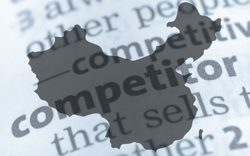 The 'troubled' European market also offers opportunities for other markets to establish themselves. Chinese brands are becoming emphatically visible in the Western machinery market. “Chinese manufacturers rapidly market new products. These machines are aggressively priced and are a direct competitor to European-made used forklifts and machines. The price of a new Chinese machine is often equal to the price of a used forklift from brands such as Toyota, Still or Linde.”
The 'troubled' European market also offers opportunities for other markets to establish themselves. Chinese brands are becoming emphatically visible in the Western machinery market. “Chinese manufacturers rapidly market new products. These machines are aggressively priced and are a direct competitor to European-made used forklifts and machines. The price of a new Chinese machine is often equal to the price of a used forklift from brands such as Toyota, Still or Linde.”
Because shipping Chinese machines to Europe is back at ‘affordable container prices’ after COVID, there is an additional pressure on prices of Western used machines. “For the time being, I do not expect a major shift to take place. For instance, the used Chinese market is still uncertain. There is no guarantee that when these machines need replacement, they will still be worth money. In addition, China has so far made limited investments in a service and sales network in Europe. This means that as a buyer of Chinese forklift trucks, you are taking a risk in terms of maintenance and repair. Finally, the quality of Chinese machines, especially in heavier operating conditions, has not yet proven itself in every field.”
Our promise to the market
Lisman Forklifts remains committed to the long term, both in corporate vision as in customer relations. “In 2023 – and far beyond. Our promise to the market stands tall: everyone is welcome to take a look inside our company, we provide everyone with tailored and personalised service, and Lisman Forklifts will be the loyal partner that everyone deserves. We have always shown that we are there for our customers. Throughout good times and in bad times. Now it's a matter of matching our offering to the market requirements of today as well as the needs of the future.”

